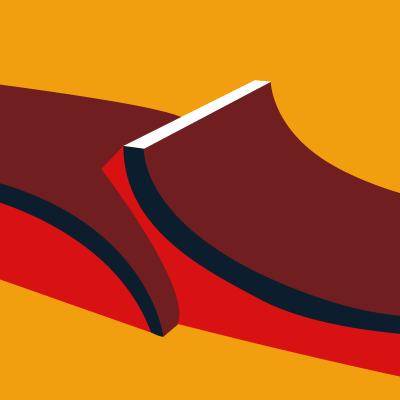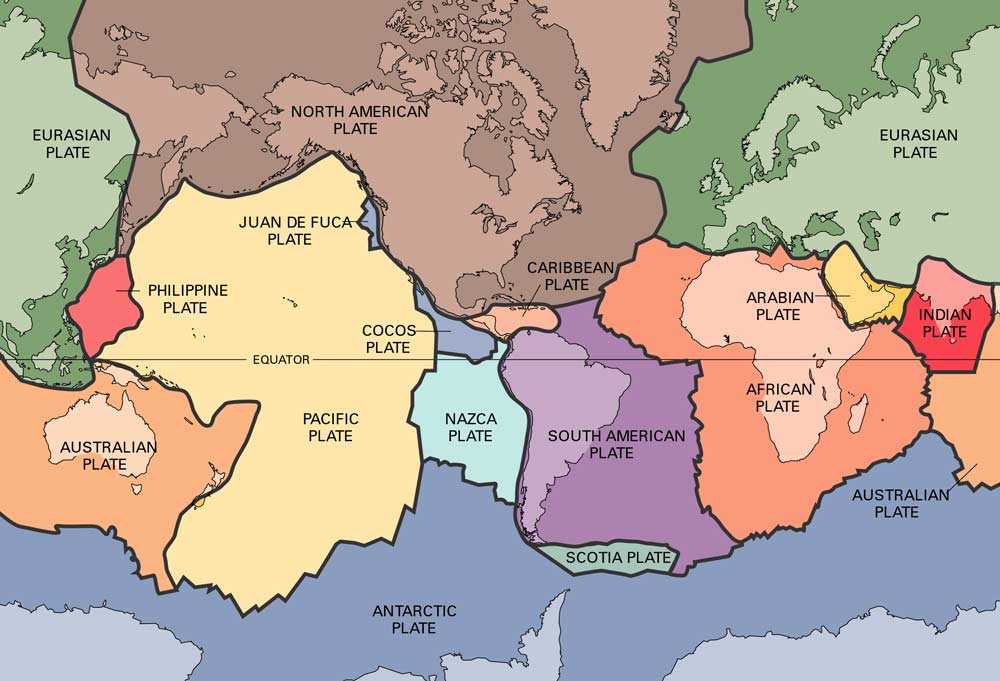
Before there were accepted scientific explanations for their causes, earthquakes were mysterious and terrifying events, generally blamed on either angry gods or the behavior of enormous mythical creatures.
For the Gabrielino Indians inhabiting what is now Southern California, for example, the explanation was that the land was carried on the backs of turtles whose occasional arguments shook the earth. Algonquin mythology attributed temblors to a noble tortoise that carried the earth, shaking the ground as it shifted around trying to get more comfortable as it tired. Chinese and Hindu mythology had similar explanations with the Earth supported respectively by a gigantic frog that twitched from time to time or eight elephants that made the ground shake when one of them tired and lowered its head.
The Vikings told of a giant wolf—chained up because it was destined to bring the end of the world—whose furious subterranean roars shook the ground. A Siberian myth held that the Earth was on a sled drawn by dogs who created violent shaking when they paused to scratch their fleas. In ancient Japan the explanation was even more creative, for it blamed the thrashing tail of a huge catfish named Namazu who lived in the center of the Earth. Namazu was held still by a giant rock kept on its head by the demigod Kashima—but when the demigod tired and allowed the rock to slip, Namazu could stir and shake the earth.
For the ancient Greeks and Romans, gods were usually anthropomorphic. The Greek god of earthquakes, for example, was Poseidon, who was also the god of the sea, storms, and horses. He would strike the ground with his trident to cause earthquakes when he wanted to punish people or when he was just in a foul mood.
A Comparatively Recent Theory
Today we have a much greater understanding of the actual nature of the peril based on science. Plate tectonics—the theory that the Earth's surface is composed of plates that flow slowly over the planet’s mantle and core—is generally accepted. But it is a comparatively recent theory and it took a long time for it to become established.

Hundreds of years ago early explorers such as Magellan noticed that the shapes of the Earth’s continents fit together like pieces of a puzzle, and more recently a number of scientists noted similarities in the geology and fauna of different land masses. But it was not until the early 20th century that the German scientist Alfred Wegener presented evidence from multiple fields and argued that the continents were once joined in a single mass and had moved apart over time. He placed this huge land mass near the South Pole and christened it “Pangaea.”
Wegener proposed his theory of “Continental drift” in 1915 but could not suggest a convincing mechanism for how such huge land masses moved. He thought, for example, that the drifting might be caused by such phenomena as the centrifugal force of the spinning planet or the gravitational pulls of the sun and the moon. The theory of Continental Drift was ridiculed at first and remained highly controversial for years.
Meanwhile, evidence that sections of the Earth’s surface are in constant motion continued to accumulate. After the World War II increased exploration of ocean floors and the growing use of seismometers around the world to monitor nuclear testing created new insights. The alignment of earthquakes, volcanoes, and other active geologic features along distinct belts was noted, for example, and defined the edges of tectonic plates.
The magnitude 9.2 Great Alaska Earthquake of March 27,1964, the strongest earthquake ever recorded in the United States, brought seismic hazard to public attention and generated much scientific and engineering research. At the time, the theory of plate tectonics was gaining credence with geoscientists, but it was still not well-known outside scientific circles. Even for those who studied the theory, movements of the Earth's rigid tectonic plates were not well understood. The area impacted by the Great Alaska Earthquake became their classroom.
Geologist Dr. George Plafker was among the group of USGS scientists immediately deployed to study the area impacted by the quake, but there were no faults at the surface to study. Months were spent puzzling over the earthquake's source, until Plafker began to study the quake through the lens of plate tectonics. His research led to the understanding that subduction of oceanic plates below continental plates is a fundamental geological process, and he later termed the Great Alaska Earthquake a "megathrust earthquake." We now view subduction zones as one of many boundaries where the interaction of plates serves as an engine for strain accumulation and catastrophic earthquakes.
There’s Still a Lot to learn
Today’s technology enables scientists to learn even more about our planet. Past plate movements, for example, can be mapped more precisely than before using paleomagnetic data (a record of the strength and direction of the Earth's magnetic field) and satellites can be used for extremely accurate measurements of the speed at which continental plates move. This is still a relatively new field and our understanding of the planet and its mechanisms is improving all the time as new research is published. And as knowledge of earthquakes and their causes improves, AIR incorporates new insights into its earthquake models as they are updated.



